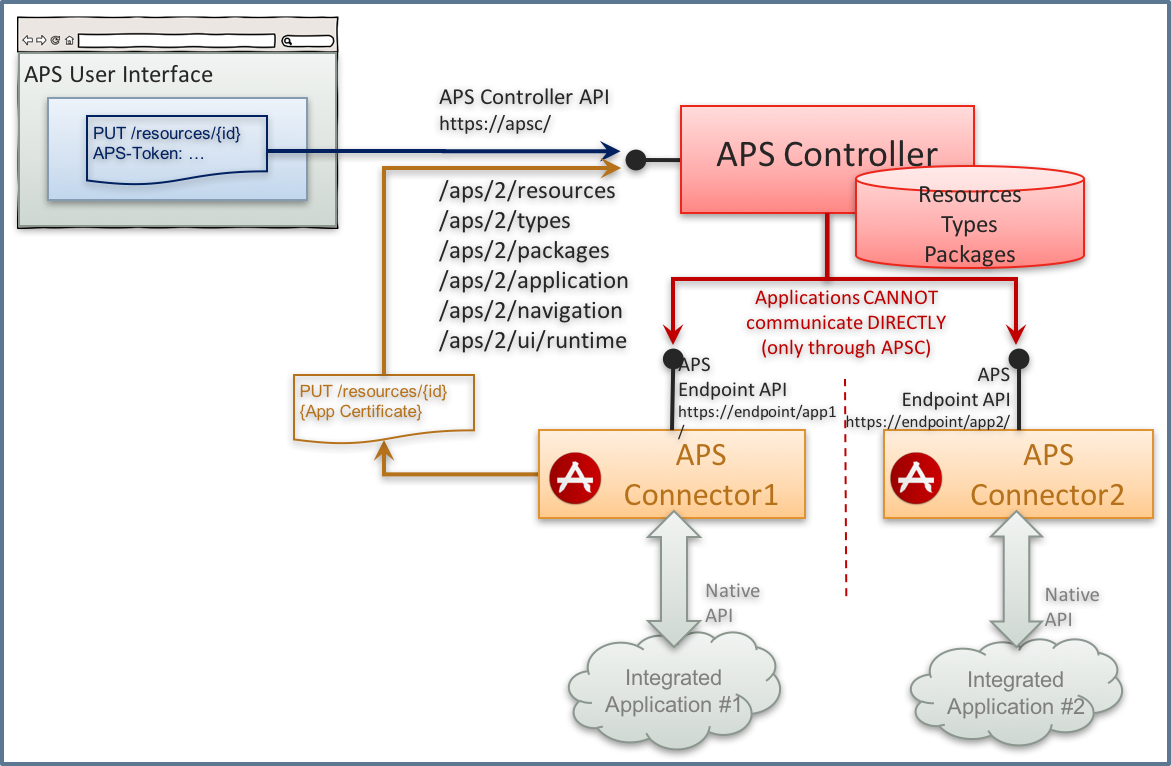Interaction through APS Connectors¶
Integration with applications includes the following interacting components and interfaces between them.

The APS controller (APSC) is the central part that is responsible for the following operations:
Controlling the central storage of all APS resources, types, and packages.
Managing the interaction between all other components in the APS infrastructure. This messaging functionality is often referred to as a service bus. Its own base endpoint is
https://apsc/aps/2/, where apsc must be changed to the actual domain name of the management node. The short/aps/2/base URL will be used in almost all examples to represent the APS controller base endpoint.Note
When managing APS objects, all communications must go through the APS controller.
Each integrated application is represented by its APS application, also known as APS connector, which contains two active integration components:
Similar to APSC, each APS connector exposes its base endpoint (APS application endpoint), for example, https://endpoint-host/app1/, and endpoint for each application service, for example, https://endpoint-host/app1/service1/, where endpoint-host must be replaced with the actual domain name of the host used to deploy APS connectors. The APS connector accepts all REST requests from the APS controller addressed to the application instance as well as to services and resources related to the application instance.
APS application instance is a logical entity in the APS connector that can initiate its own REST requests addressed to the APS controller endpoint on behalf of the integrated application. During its installation, each APS application instance, gets a unique certificate and private key generated by the APS controller. When sending a REST request to the APS controller, an APS application instance must confirm its identity by applying its APS certificate to the package. An instance can receive APS requests only from the APS controller, meaning that every incoming request must be signed by the valid SSL certificate of the APS controller.
APS user interface represents the one-way communication tool connecting users with other components through the APS controller.
